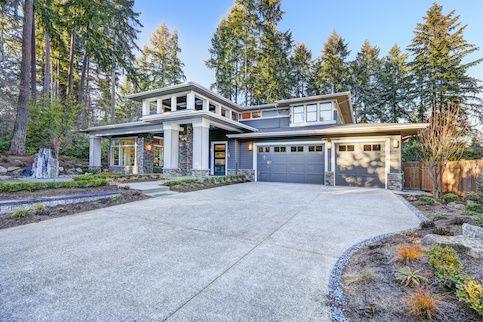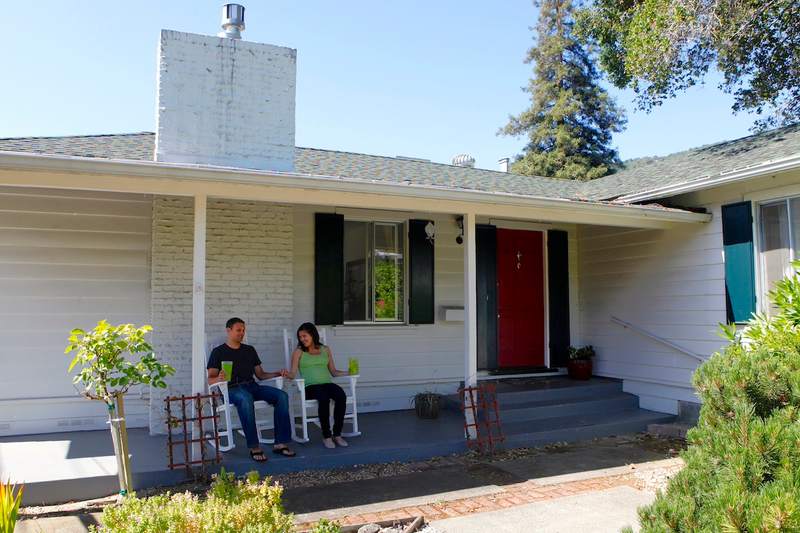Steep housing costs can be an obstacle for many would-be home buyers across America. Fortunately, a Federal Housing Administration (FHA) loan that exceeds certain limiting amounts is available without imposing stringent financial requirements.
Often referred to as an “FHA jumbo loan,” these mortgages come from the FHA to help you purchase a high-priced home.
It’s important to note that the FHA doesn’t offer a specific product called an “FHA jumbo loan,” nor do lenders have a specific product named this. However, since they’re commonly called “FHA jumbo loans,” we’ll refer to them as this throughout the article.
What Is An FHA Jumbo Loan?
An FHA jumbo loan is any FHA loan between the loan limit floor (the most you can borrow on a normal FHA loan) and the ceiling (the most you can borrow on any FHA loan, period).
In 2023, the FHA loan limit for a one-unit home in most areas of the U.S. is $472,030. The ceiling is $1,089,300. In special areas, including Alaska and Hawaii, the ceiling is $1,633,950.
So, with an FHA jumbo loan, you can borrow between $472,031 and $1,089,300 for a one-unit home in most areas of the U.S.
An FHA loan is a mortgage that’s insured by the federal government. It’s considered a non-conforming loan because it doesn’t follow the guidelines set by government-sponsored enterprises (GSEs) like Fannie Mae and Freddie Mac.
Like FHA loans, conforming loans also have a limit, which is set by these two GSEs. In most areas of the U.S., these limits are higher than the FHA limit. When a person wishes to borrow more than the limit, they get a jumbo loan, which may have stricter requirements.
Because the government backs an FHA loan, borrowers have less stringent financial standards to fulfill to qualify. As a result, an FHA jumbo loan combines the relaxed financial requirements of an FHA loan and the increased loan capacity of jumbo loans.
See What You Qualify For
Buy A Home
Discover mortgage options that fit your unique financial needs.

Refinance
Refinance your mortgage to have more money for what matters.
Tap Into Equity
Use your home’s equity and unlock cash to achieve your goals.
FHA Jumbo Loan Limits
The Department of Housing and Urban Development (HUD) sets FHA loan limits each year. In addition, location and units within the home influence limits. The following table outlines the FHA loan limits for 2023.
Property Size | Loan Limit Floor | Loan Limit Ceiling | Ceiling for Alaska, Hawaii, Guam and U.S. Virgin Islands |
|---|---|---|---|
One unit | $472,030 | $1,089,300 | $1,633,950 |
Two units | $604,400 | $1,394,775 | $2,092,150 |
Three units | $730,525 | $1,685,850 | $2,528,775 |
Four units | $907,900 | $2,095,200 | $3,142,800 |
As the table demonstrates, borrowers can access an FHA jumbo loan of at least $472,030. However, certain areas have higher limits to account for regional housing expenses.
Jumbo Loan FHA Requirements
Home buyers who want an FHA jumbo loan must fulfill conditions like those of a typical FHA loan, including:
- Debt-to-income ratio (DTI): Your DTI requirement will depend on your lender, but the highest DTI max for an FHA loan is 57%, where the lowest is around 40%.
- Credit score: Lenders providing FHA home loans typically require a minimum credit score of 580. Depending on the lender, you may need a high credit score to borrow over the limit.
- Minimum down payment: FHA jumbo loans require a down payment of 3.5% of the loan for home buyers with a credit score of 580 or higher. Buyers with a score less than 580 must put down 10%.
- Multiple appraisals: An FHA-approved appraiser must appraise the home. However, two home appraisalsmay be required if the loan amount surpasses $484,350 and the loan-to-value ratio (LTV) is at least 95%.
- Primary residence: Your FHA jumbo loan can only finance the purchase of your primary residence, not a second home.
- Inspection: The house must pass an inspection and fulfill minimum property standards.
- Mortgage insurance premium (MIP): The FHA charges MIPs to protect itself from borrowers defaulting on mortgages. MIP comes in two forms: a charge of 1.75% of the loan amount at closing, and annual charges ranging from 0.15% – 75% of the original loan amount. If you make a down payment of at least 10%, MIP goes away after 11 years.
Find A Mortgage Today and Lock In Your Rate!
Get matched with a lender that will work for your financial situation.
FHA Jumbo Loans Vs. Standard FHA Loans
FHA jumbo loans and standard FHA loans both come with government backing. However, because they provide different-sized mortgages, they have several contrasting characteristics:
Down Payment Assistance
Various nonprofits and state government agencies provide down payment assistance for FHA loans. First-time home buyers may have an easier time qualifying for assistance. However, borrowers receiving an FHA jumbo loan of $484,350 or higher are ineligible for down payment assistance.
Credit Score
Standard FHA mortgage loans and FHA jumbo loans may have the same credit score requirements, though it depends on the lender. Because FHA jumbo loans are usually for higher amounts, it’s helpful (and often required) to have a higher credit score. With a higher score may come better terms, including a better interest rate.
Jumbo FHA Loan Rates
FHA jumbo loans generally have better interest rates than conventional jumbo loans. However, because of the higher loan amounts, they may have higher rates than typical FHA loans.
Pros And Cons Of Jumbo FHA Loans
Thinking about applying for a jumbo FHA loan? First, consider these pros and cons:
Pros | Cons |
|---|---|
FHA jumbo loans have lower down payment and credit score requirements than traditional jumbo loans. | Loan limits can vary by county. |
FHA jumbo loans can have lower interest rates than traditional jumbo loans. | You’ll have to pay mortgage insurance. |
FHA jumbo loans can help you afford higher housing costs with a sub-par credit score. | Lenders can choose to have stricter financial requirements. |
Loan limits for FHA jumbo loans are typically higher than conforming loan limits. | Higher loan amounts come with higher closing costs for borrowers. |
Is An FHA Jumbo Loan Right For You?
An FHA jumbo loan is an excellent way to get a larger loan without having to fulfill stricter financial requirements of traditional jumbo loans. As a result, these loans are helpful when you anticipate expensive housing costs but may not have excellent credit.
For example, an FHA jumbo loan can provide you with a hefty mortgage and a low interest rate if you live in a regionwith high housing costs, like Alaska or Hawaii. These loans make purchases and home builds possible where other loans aren’t big enough.
However, MIPs can make FHA jumbo loans expensive because you’ll likely pay a percentage of the base loan amount for the life of the loan. In addition, your local lender might have tighter borrower requirements than those included in this article. This can make obtaining an FHA loan more challenging. Therefore, your local housing market and FHA lender can help you determine whether an FHA jumbo loan fits your situation.
The Bottom Line
An FHA jumbo loan is a government-backed loan that allows borrowers with lower credit scores and smaller down payments to obtain larger mortgages over the FHA floor limit. This loan can be beneficial in locations with high housing costs and help borrowers looking at more expensive homes. However, home buyers considering the FHA jumbo loan need to pay MIPs and higher closing costs. In that case, it might not be the best option for everyone.
See What You Qualify For
You can get a real, customizable mortgage solution based on your unique financial situation.

Ashley Kilroy
Ashley Kilroy is an experienced financial writer who writes for solo entrepreneurs as well as for Fortune 500 companies. She is a finance graduate of the University of Cincinnati. When Ashley isn’t helping people understand their finances, you may find her cage-diving with great whites or on safari in South Africa.












